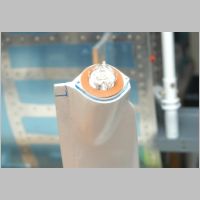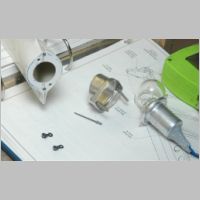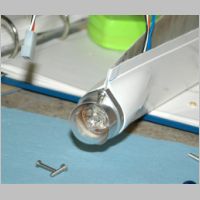Lighting Tips
I have decided that I definitely
will be
using HID's for landing lights.
In addition, I want to use LED's for the NAV lighting.
The
reasons for the HID's are power draw, longevity, and brightness.
The reason for the LED's is just power draw and longevity.
For those who don't know, HID's are a high pressure, high voltage
light, that has an external power pack that generates a very high
starting voltage. These lights have no filament to burn out,
and
typically last a "lifetime". Standard PAR 36 aviation lamps
are
known for their short life of usually 25 operating hours or less.
HID's are also about 3 times as bright as a Halogen, and draw
about 1/3 the power. I purchased and installed landing light
kits
from Duckworks
that
get cut into the leading edge. These kits are available at Van's...HERE.
The price might shock you as being high (if you go with
HIDs),
but for those who take
the time to educate themselves, you'll be impressed by the
benefits. For those who want to save a bunch of bucks, you
can
buy the same kit with either the rectangular or the round style lights,
and put in bulbs from 50W to 100W.....or even 250W if you really want
that power draw. These kits will allow me to skip using the
cheesy MR-16
bulbs in the wingtips, and use larger and brighter bulbs. I
put
HID's in both wings, for maximum brightness. The one
thing you don't want to do though is use wig-wag flashers with
HID's....it'll burn them out quick.
The HID's I'm using should be far brighter than the Halogens of the
same size, and will only draw 3A (35W) while operating. In
contrast, the 250W bulb in my old plane took 20A of power to run it,
and wasn't nearly as bright as one of these will be. If your
alternator craps out at night, you'll appreciate lighting that runs on
less power.
To see my RV-10
Duckworks HID
installation page, just follow this link
Here are a couple of links to information on HID's. Try a
google
search for more.
http://faqlight.carpassion.info/headlamp-faq.htm
http://faqlight.carpassion.info/hl-hid-bulbs.htm
http://faqlight.carpassion.info/hl-hid-kits.htm
http://www.suvlights.com/faq-qa.htm#6000K%20and%208000K%20D2S%20bulbs
Here's
another builder who put
a Duckworks kit into his wing, but he used an aftermarket HID bulb.
That's fine, but you'll really want D1S type bulbs. D2S are
more
common. The difference is that D1S bulbs have the igniter in
the
bulb, so that's where the high-voltage (over 20kv possible!)
is.
The D2S setup has high
voltage traveling down it's wires, and makes it much more succeptable
to cause EMI (Electromagnetic noise, basically) His photos
are
good though.
http://www.f1-rocketboy.com/hid.htm
Also, this pic shows another list members wingtip light
design.
Pretty cool! Thanks Mark!
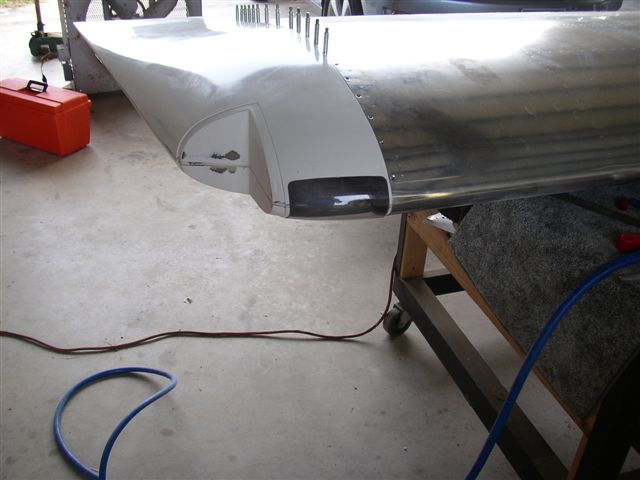
LED Lighting
This is one of the coolest do-it-yourself LED Position Light pages I've
EVER seen!
It's by Ernest Christley
http://ernest.isa-geek.org/Delta/Experiments/Dyke_Experiment_LED.html
For the Non-Do-It-Yourself person, there are LED light kits from CreativAir,
and Perihelion
Design.
I'm not yet sure which system I'll go with. Doing it myself
is
attractive, because I can customize the entire thing
to fit my taste. The CreativAir units seem too "Circuit
Board"
looking. The Perihelion was attractive from an
engineering standpoint, but it's not too pretty either, and it's huge.
I'll be delaying my Nav light work until later
in the finishing stages of the project to give more thoughts time to
build up.
Strobes
Per Dan Lloyd:
When you look at this website, it is Nova's website, so of course they
would be pushing Creative, as the only seller they have currently. I
know Bill and trust his product. I do not however see the value in
paying more for a power supply because it has AVIATION in it. Granted if
you look at the description it looks like it does put out more power,
but you are paying for it at a premium.
For me I am looking at the Able2 products, these are the strobes they
use for emergency vehicles. I have found a site
http://www.strobe-direct.com/index.htm that carries all strobe makers,
including Whelen. They have allot of kits, and I would recommend you at
least look at them before you commit.
Cockpit Flashlights
Adrian Moses, RV-10 Builder, brought a way cool light with him to OSH
2005. When I saw it, I knew I had to have one. I've
been
using some LED flashlights, one red and one white for a couple years.
Very nice and easy on the batteries. His light
though, was
1/2 the
length, and had both the red and the white in it. He got it
at
Lowes, but by me there are no Lowes. So when down at
Sun-N-Fun
2006, I ran into a Lowes and found the flashlights. Here are
some
photos of the box so you can identify it. Coast Cutlery - Tek
Torches (CCC7736D) V2 Dual Color LED Flashlight - White and Red LEDs
p/n TT7736DCP.
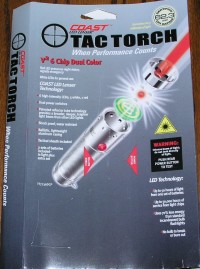
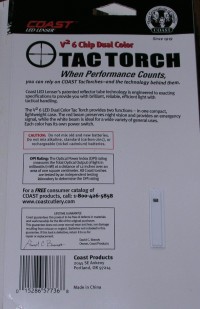
Mounting the Tail Strobe
- Thanks James Hein
1. Start by cutting a 1" hole in the center of the tail fairing where
the strobe is supposed to be located. Be careful, the seam in the
fiberglass on mine was not exactly in the middle, so don't use it to
determine the centerline.
2. Enlarge the hole slightly with a file until the strobe assembly
drops in place.
3. Take apart strobe assembly, then enlarge the mounting holes in both
the strobe assembly, and the retaining cover carefully to 5/32". Remove
material that is toward the outside of the strobe. This is most easilly
accomplished by using a step drill by hand, turning the bit half way
around, then back a half turn. This is needed so that the head of a
6-32 screw can sit flat on the strobe cover.
4. Mark and drill the mounting holes for the strobe "tabs" in the
fiberglass.
5. Take two K1000-06 nutplates, and cut off one of the tabs.
6. Drill the nutplate holes in the fiberglass (see photo for
approximate location)
7. Countersink the nutplate rivet holes
8. Make sure the nutplates are trimmed well enough so that they fit
properly in the fairing.
9. Using CCR-264SS-3-2 pop rivets, rivet the nutplates in place.
10. Install strobe assembly using two commercially available pan head
6-32 1" long screws.
To see my interior lighting, Click This Link.
